Unusual Neolithic Burial From Grotta Di Pietra Sant’ Angelo Puzzles Archaeologists
Jan Bartek - AncientPages.com - Scientists have examined an unusual Neolithic burial in Southern Italy. The curious archaeological finding poses many questions. Researchers are attempting to determine why people buried a dead person at an unusual place at high altitudes far away from inhabited areas.
Pollino National Park, where Grotta Di Pietra Sant' Angelo is located. Credit: Adobe Stock - Anna Fedorova
Paleopathological investigation of the skeletal remains has shed some light on the lifestyle of the deceased. The science team suggests the presence of numerous markers that could be associated with craft activities, but why did this Neolithic individual end up buried in a cave located 650 meters above sea level?
Neolithic Skeleton And No Grave Goods Discovered In Grotta Di Pietra Sant' Angelo
Grotta Di Pietra Sant' Angelo, an extended limestone massif located on the Calabrian side of the Pollino National Park in the municipality of San Lorenzo Bellizzi (Cosenza), was officially discovered in 1978, and the archaeological exploration of the site was initiated in 2017. At the time of the excavation, scientists found the skeleton of a male individual of about 30-35 years, but there were no signs of any grave goods.
Most of the information obtained by the research team "was derived by the dentition, which is complete and with particular wear on the anterior teeth and the upper and lower first molars, probably connected with a paramasticatory activity of the teeth. The characteristics of the deposition together with the archaeological context recorded in the stratigraphic deposits of the cave have led to the identification of the inhumation burial as probably belonging to the ancient Neolithic period." 1
The location of the archaeological site. Credit: Fontani, F., Boano, R., Cinti, A. et al, Nature
Based on archaeological findings, scientists have successfully confirmed Neolithic lifeways were well established in Southern Italy at the end of the sixth millennium B.C. Grotta di Pietra Sant’Angelo preserves the most ancient evidence of human activity in Northern Calabria. Inside Pietra Sant’Angelo, there are plenty of cavities, with at least 21 vertical and horizontal caves surveyed in the area.
The skeletal remains of the Neolithic man unearthed in the cave were found inside an ovular pit directly carved in the ground. The buried individual was "found prone, E–W oriented, face turned to the earth and in an extremely contracted position; medium-sized stones covered the skull and the right side of the body, with smaller stones lying above the pelvis, trunk, and limbs.
Despite a consistent anthropogenic presence in the cave, marked by evidence of pottery fragments associated with the Diana and Serra d’Alto facies5, the cave did not yield any further signs of funerary activity. The lack of funerary equipment, along with the use of a simple pit inside a cave, led to a Neolithic contextualization of the burial. This was later confirmed by radiocarbon analysis." 2
Grotta Di Pietra Sant' Angelo Is Extremely Difficult To Reach
If only one skeleton has been found inside Grotta di Pietra Sant’Angelo, should the place be regarded as a Neolithic burial site? Despite the many cavities that have been surveyed in the area of the rock massif, this is the only one where the presence of Neolithic funerary activities has been identified thus far. Similar burials with a single individual buried in a prone and huddled position, with the face turned towards the ground have been discovered in Palata di Canosa 44, Pulo di Molfetta 45 and Titolo di Bari-Palese9, three Apulian sites. These burials dated to the Ancient and Middle Neolithic are intriguing, but there is a difference between them and Grotta di Pietra Sant’Angelo. The main difference is that these burials are located in typical funerary contexts, within or in proximity of the villages.
The skeletal remains of the individual as found inside the cave. Credit: Felice Larocca - Nature
Some of the results of the interdisciplinary study have been surprising and allowed the research team to "reconstruct an almost complete bioarchaeological profile of the individual. Whether the funerary anomaly expressed in Grotta di Pietra Sant’Angelo could be related to necrophobic or ritual practices, such theories cannot be clarified through the outcome of this interdisciplinary research.
The intact jaws of the individual. Credit: Alessandra Cinti - Nature
However, some of the evidence we gathered suggests interesting possibilities. The absence of traces of trauma on skeletal remains and the presence of bacteria potentially related to inflammatory diseases, combined with the detection of human proteins of the innate immune system, could suggest the persistence of a non-specific inflammatory state with potentially fatal consequences.
The possibility that the individual may have died away from his community would explain the unorthodox choice of burying the person in a site where no specific mortuary functions have been attested. Despite the lack of clear funerary equipment, the burial itself could be defined as the expression of carefully planned social behavior, especially considering the difficulties that arise in accessing the cavity."
The Neolithic burial from Grotta Di Pietra Sant' Angelo remains as unusual as intriguing.
Written by Jan Bartek - AncientPages.com Staff Writer
Copyright © AncientPages.com All rights reserved. This material may not be published, broadcast, rewritten or redistributed in whole or part without the express written permission of AncientPages.com
Expand for references- Antonella Minell - Una sepoltura preistorica nella Grotta di Pietra Sant’Angelo (San Lorenzo Bellizzi). Aspetti archeologici e antropologici. IRIS
Fontani, F., Boano, R., Cinti, A. et al. Bioarchaeological and paleogenomic profiling of the unusual Neolithic burial from Grotta di Pietra Sant’Angelo (Calabria, Italy). Sci Rep 13, 11978 (2023).
More From Ancient Pages
-
 Native American Sun Dance: Important Ceremony Of The Plains Indians Of North America
Ancient History Facts | May 20, 2016
Native American Sun Dance: Important Ceremony Of The Plains Indians Of North America
Ancient History Facts | May 20, 2016 -
 Stones Of Rajajil – Sophisticated Road Markers Or An Ancient Astronomical Observatory?
Civilizations | May 21, 2017
Stones Of Rajajil – Sophisticated Road Markers Or An Ancient Astronomical Observatory?
Civilizations | May 21, 2017 -
 Yomi – Kingdom Of The Dead In Japan’s Native Shinto Religion
Featured Stories | Jun 7, 2021
Yomi – Kingdom Of The Dead In Japan’s Native Shinto Religion
Featured Stories | Jun 7, 2021 -
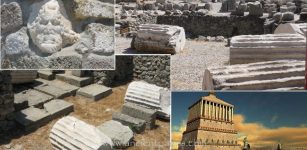 Halicarnassus’ Monumental Tomb Built With Shining Stones Belonged To Carian Ruler Mausolus
Featured Stories | Jul 20, 2016
Halicarnassus’ Monumental Tomb Built With Shining Stones Belonged To Carian Ruler Mausolus
Featured Stories | Jul 20, 2016 -
 Mysterious Tiahuanaco Empire Established By The Sons Of The Sun – An Unknown Chapter Of Prehistory
Featured Stories | Oct 30, 2018
Mysterious Tiahuanaco Empire Established By The Sons Of The Sun – An Unknown Chapter Of Prehistory
Featured Stories | Oct 30, 2018 -
 Mysteries Of The Great Dismal Swamp – Unexplained Vanishings, Bewildering Encounters With Weird Beings, And Scary Legends
Featured Stories | Dec 22, 2024
Mysteries Of The Great Dismal Swamp – Unexplained Vanishings, Bewildering Encounters With Weird Beings, And Scary Legends
Featured Stories | Dec 22, 2024 -
 Battle Of Assandun: The Great Battle In English History And A Brief Period Of Viking Dominion In England
Featured Stories | Apr 11, 2016
Battle Of Assandun: The Great Battle In English History And A Brief Period Of Viking Dominion In England
Featured Stories | Apr 11, 2016 -
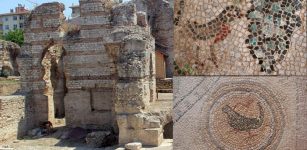 Beautiful Zeugma-Like Mosaics Unearthed In Sinop Province, Northern Turkey
Archaeology | Oct 17, 2020
Beautiful Zeugma-Like Mosaics Unearthed In Sinop Province, Northern Turkey
Archaeology | Oct 17, 2020 -
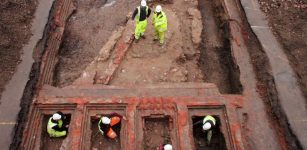 Early Twelfth-Century Castle Walls Unearthed Outside Gloucester, England
Archaeology | Dec 9, 2015
Early Twelfth-Century Castle Walls Unearthed Outside Gloucester, England
Archaeology | Dec 9, 2015 -
 Tír na nÓg – Mythical Land Where Time Floats Slower Than In Mortal Lands
Celtic Mythology | Mar 2, 2020
Tír na nÓg – Mythical Land Where Time Floats Slower Than In Mortal Lands
Celtic Mythology | Mar 2, 2020 -
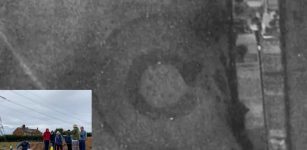 5,000-Year-Old Arminghall Henge In Norwich Reveals Some Of Its Secrets
Archaeology | Dec 20, 2022
5,000-Year-Old Arminghall Henge In Norwich Reveals Some Of Its Secrets
Archaeology | Dec 20, 2022 -
 Gil Pérez: Unexplained Ancient Teleportation Of A Spanish Soldier
Featured Stories | Oct 15, 2018
Gil Pérez: Unexplained Ancient Teleportation Of A Spanish Soldier
Featured Stories | Oct 15, 2018 -
 The Untold Story Of The Inca – Fire In The Sky – Part 1
Civilizations | Jul 2, 2019
The Untold Story Of The Inca – Fire In The Sky – Part 1
Civilizations | Jul 2, 2019 -
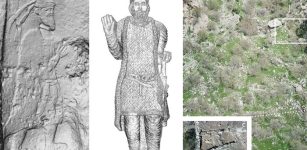 Mysterious 2,000-Year-Old Lost City Of Natounia May Have Been Found!
Archaeology | Jul 20, 2022
Mysterious 2,000-Year-Old Lost City Of Natounia May Have Been Found!
Archaeology | Jul 20, 2022 -
 The Untold Story Of The Great Sphinx – Puzzling Discoveries – Part 2
Featured Stories | Aug 13, 2019
The Untold Story Of The Great Sphinx – Puzzling Discoveries – Part 2
Featured Stories | Aug 13, 2019 -
 Secret Ancient Knowledge Of Venus – Controversial Theory And Surprising Discovery – Part 1
Civilizations | Jun 30, 2018
Secret Ancient Knowledge Of Venus – Controversial Theory And Surprising Discovery – Part 1
Civilizations | Jun 30, 2018 -
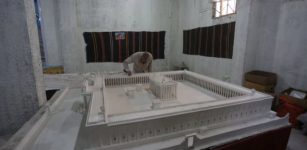 Memory Of Palmyra’s Ancient Ruins Preserved Thanks To One Man’s Dedication And Mini Models Of Lost Temples
Archaeology | Mar 24, 2021
Memory Of Palmyra’s Ancient Ruins Preserved Thanks To One Man’s Dedication And Mini Models Of Lost Temples
Archaeology | Mar 24, 2021 -
 Mysterious Ancient European Civilization – Puzzling North American Connection – Part 1
Civilizations | Oct 21, 2019
Mysterious Ancient European Civilization – Puzzling North American Connection – Part 1
Civilizations | Oct 21, 2019 -
 Mysterious, Well-Preserved Ancient Foreign Mummies Found On Remote Islands In North America
Featured Stories | Jan 5, 2025
Mysterious, Well-Preserved Ancient Foreign Mummies Found On Remote Islands In North America
Featured Stories | Jan 5, 2025 -
 Mysterious Nine Worlds Of Yggdrasil – The Sacred Tree Of Life In Norse Mythology
Featured Stories | Mar 8, 2017
Mysterious Nine Worlds Of Yggdrasil – The Sacred Tree Of Life In Norse Mythology
Featured Stories | Mar 8, 2017




